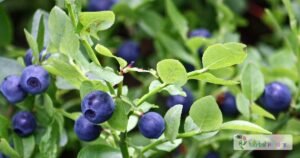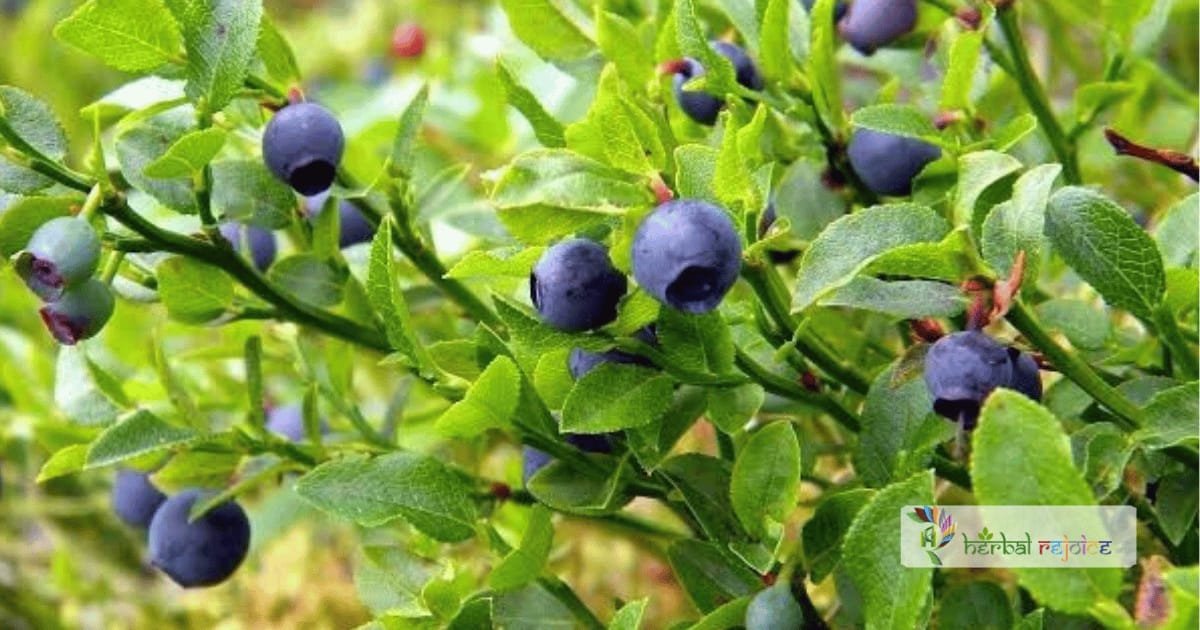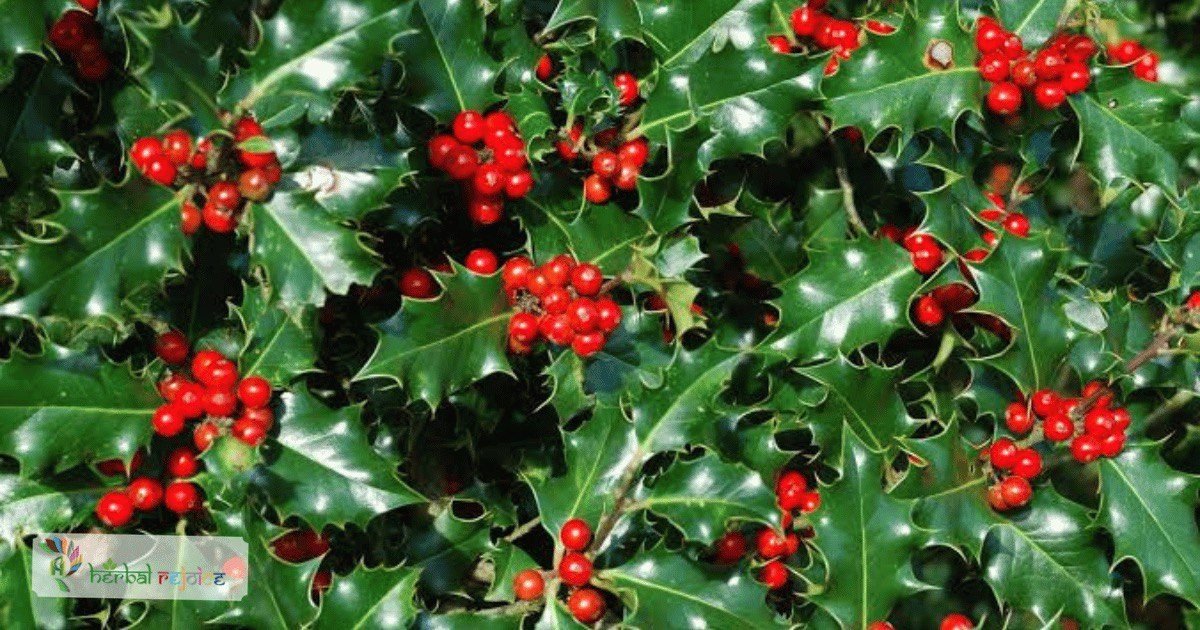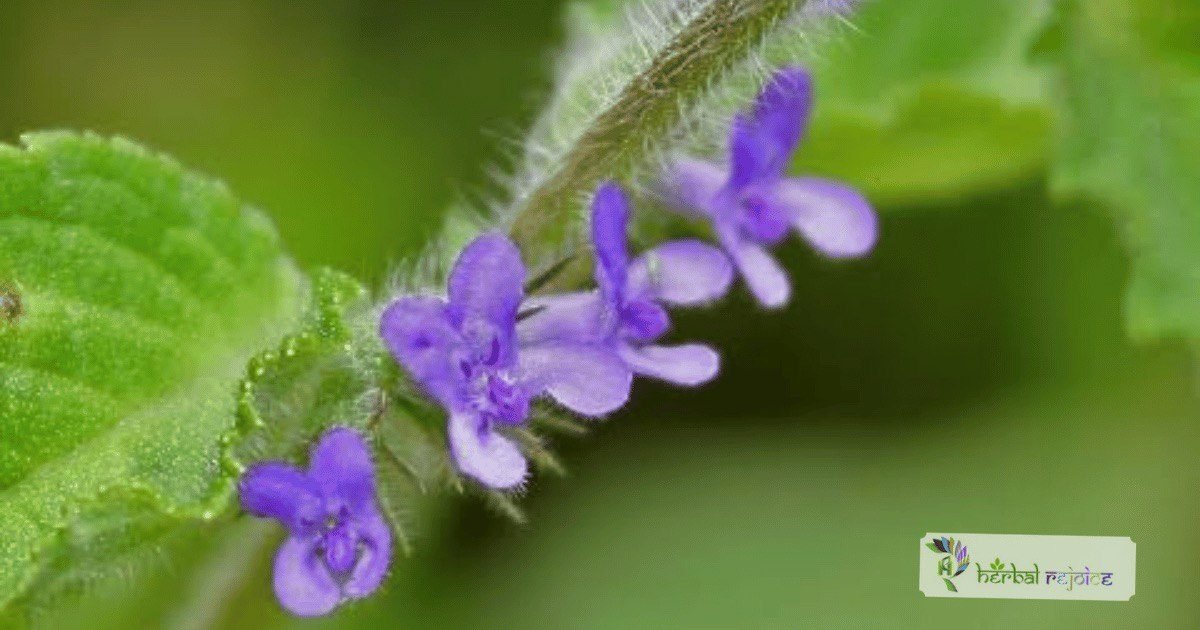Introduction
Bilberry, scientifically known as Vaccinium myrtillus Linn., is a plant species that belongs to the Vacciniaceae family.
Bilberry has been traditionally used in the treatment of nonspecific, acute diarrhea and mild inflammation of the mucous membranes of the mouth and throat.

Names and Habitat
It is native to the UK, Europe, and North America (with approximately 21 species found in India). The English names for this plant are Bilberry and Blueberry.
Traditional Uses of Bilberry
Bilberry has several medicinal properties, including being astringent, diuretic, and refrigerant. It has been traditionally used in the treatment of nonspecific, acute diarrhea and mild inflammation of the mucous membranes of the mouth and throat.
The German Commission E recognizes the topical use of bilberry fruit in the treatment of mild inflammation of the mouth and throat.
In addition to its traditional uses, anthocyanine enriched extracts of the bilberry fruit have been used to address issues related to varicose veins, such as heavy legs. This usage has been recommended by the European Scientific Cooperative on Phytotherapy (ESCOP).
Chemical Constituents Of Bilberry
The main constituents of the bilberry fruit are anthocyanosides, which make up about 0.5% of the fruit. Other constituents include tannins, hydroxycinnamic and hydroxybenzoic acids, flavonol glycosides, flavan-3-ols, iridoids, terpenes, pectins, and organic plant acids.
These components contribute to the various medicinal properties of the fruit. The ESCOP also recognizes the presence of these constituents in its monograph on bilberry fruit.
Other Species of Bilberry
In India, there are several species of Vaccinium found. V. symplocifolium Alston, also known as Kilapalam in Tamil Nadu, is abundantly found in the mountains of South India up to an altitude of 2,400m.
V. neilgherrense Wight, known as Kalavu in Tamil Nadu and Olenangu in Karnataka, is commonly found in the hills of Kerala, Karnataka, and Tamil Nadu at altitudes of 600-2,000m. These Indian species have their own unique medicinal properties and traditional uses.
Cranberry, another species within the Vaccinium genus (Vaccinium sp.), has medicinal applications as well. It is commonly used for urinary incontinence and as a preventive measure against urinary tract infections (UTIs). This usage has been documented by Sharon M. Herr in her research.
Conclusion
In conclusion, Bilberry (Vaccinium myrtillus Linn.) is a plant species with various medicinal properties. It has been traditionally used in the treatment of diarrhea and mild inflammation of the mouth and throat. Anthocyanine enriched extracts of the fruit have also been used for issues related to varicose veins.
Cranberry (Vaccinium sp.) is another species within the Vaccinium genus that is used for urinary incontinence and UTI prevention. Both species have specific chemical constituents that contribute to their medicinal properties.
In addition, India is home to several species of Vaccinium, each with their own unique uses and constituents.
Frequently Asked Questions (FAQs)
1What are the medicinal properties of Bilberry?
Bilberry has several medicinal properties, including being astringent, diuretic, and refrigerant.
How is Bilberry traditionally used?
Bilberry has been traditionally used in the treatment of nonspecific, acute diarrhea and mild inflammation of the mucous membranes of the mouth and throat.
What is the topical use of bilberry fruit recognized for?
The German Commission E recognizes the topical use of bilberry fruit in the treatment of mild inflammation of the mouth and throat.
What is the recommended usage of anthocyanine enriched extracts of the bilberry fruit?
The European Scientific Cooperative on Phytotherapy (ESCOP) recommends the usage of anthocyanine enriched extracts of the bilberry fruit for issues related to varicose veins, such as heavy legs.
What is Cranberry commonly used for?
Cranberry is commonly used for urinary incontinence and as a preventive measure against urinary tract infections (UTIs).
What are the main constituents of the bilberry fruit?
The main constituents of the bilberry fruit are anthocyanosides, which make up about 0.5% of the fruit. Other constituents include tannins, hydroxycinnamic and hydroxybenzoic acids, flavonol glycosides, flavan-3-ols, iridoids, terpenes, pectins, and organic plant acids.
How do these components contribute to the medicinal properties of bilberry?
These components contribute to the various medicinal properties of bilberry, such as its astringent and diuretic effects.
What is the recognized presence of these constituents in bilberry?
The ESCOP recognizes the presence of these constituents in its monograph on bilberry fruit.
Where are these Indian species of Vaccinium commonly found?
V. symplocifolium Alston is abundantly found in the mountains of South India up to an altitude of 2,400m. V. neilgherrense Wight is commonly found in the hills of Kerala, Karnataka, and Tamil Nadu at altitudes of 600-2,000m.
What are the traditional uses of the Indian species of Vaccinium?
These Indian species of Vaccinium have their own unique medicinal properties and traditional uses.
What are the English names for the Vaccinium myrtillus Linn. plant?
The English names for the Vaccinium myrtillus Linn. plant are Bilberry and Blueberry.
Where is Bilberry native to?
Bilberry is native to the UK, Europe, and North America.
How many species of Vaccinium are found in India?
Approximately 21 species of Vaccinium are found in India.
What is the scientific name of Bilberry?
The scientific name of Bilberry is Vaccinium myrtillus Linn.
What are the documented medicinal applications of Cranberry?
Cranberry has documented medicinal applications for urinary incontinence and as a preventive measure against urinary tract infections (UTIs), as shown by Sharon M. Herr in her research.
Why is bilberry fruit used for varicose veins?
Anthocyanine enriched extracts of the bilberry fruit have been used for issues related to varicose veins, such as heavy legs, due to its therapeutic properties.
What are the chemical constituents of bilberry fruit?
The bilberry fruit contains anthocyanosides, tannins, hydroxycinnamic and hydroxybenzoic acids, flavonol glycosides, flavan-3-ols, iridoids, terpenes, pectins, and organic plant acids.
What organization recognizes the presence of these constituents in bilberry fruit?
The European Scientific Cooperative on Phytotherapy (ESCOP) recognizes the presence of these constituents in its monograph on bilberry fruit.





